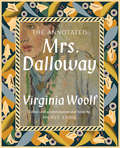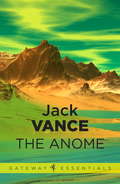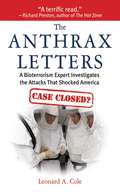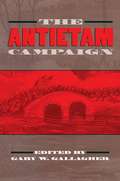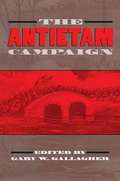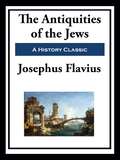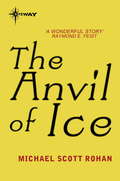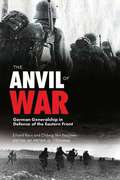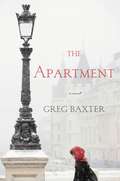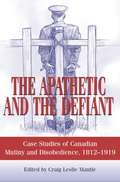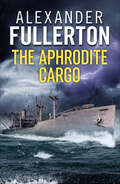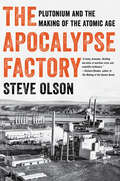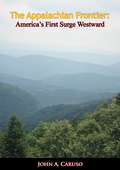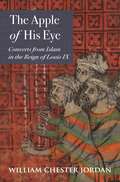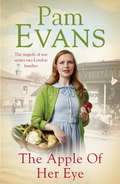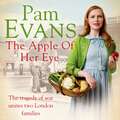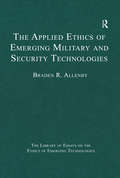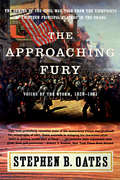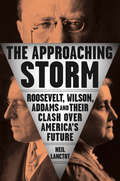- Table View
- List View
The Annotated Mrs. Dalloway
by Virginia Woolf Merve EmreVirginia Woolf’s groundbreaking novel, in a lushly illustrated hardcover edition with illuminating commentary from a brilliant young Oxford scholar and critic. “Mrs. Dalloway said she would buy the flowers herself.” So begins Virginia Woolf’s much-beloved fourth novel. First published in 1925, Mrs. Dalloway has long been viewed not only as Woolf’s masterpiece, but as a pivotal work of literary modernism and one of the most significant and influential novels of the twentieth century. In this visually powerful annotated edition, acclaimed Oxford don and literary critic Merve Emre gives us an authoritative version of this landmark novel, supporting it with generous commentary that reveals Woolf’s aesthetic and political ambitions—in Mrs. Dalloway and beyond—as never before. Mrs. Dalloway famously takes place over the course of a single day in late June, its plot centering on the upper-class Londoner Clarissa Dalloway, who is preparing to throw a party that evening for the nation’s elite. But the novel is complicated by Woolf’s satire of the English social system, and by her groundbreaking representation of consciousness. The events of the novel flow through the minds and thoughts of Clarissa and her former lover Peter Walsh and others in their circle, but also through shopkeepers and servants, among others. Together Woolf’s characters—each a jumble of memories and perceptions—create a broad portrait of a city and society transformed by the Great War in ways subtle but profound ways. No figure has been more directly shaped by the conflict than the disturbed veteran Septimus Smith, who is plagued by hallucinations of a friend who died in battle, and who becomes the unexpected second hinge of the novel, alongside Clarissa, even though—in one of Woolf’s many radical decisions—the two never meet. Emre’s extensive introduction and annotations follow the evolution of Clarissa Dalloway—based on an apparently conventional but actually quite complex acquaintance of Woolf’s—and Septimus Smith from earlier short stories and drafts of Mrs. Dalloway to their emergence into the distinctive forms devoted readers of the novel know so well. For Clarissa, Septimus, and her other creations, Woolf relied on the skill of “character reading,” her technique for bridging the gap between life and fiction, reality and representation. As Emre writes, Woolf’s “approach to representing character involved burrowing deep into the processes of consciousness, and, so submerged, illuminating the infinite variety of sensation and perception concealed therein. From these depths, she extracted an unlimited capacity for life.” It is in Woolf’s characters, fundamentally unknowable but fundamentally alive, that the enduring achievement of her art is most apparent. For decades, Woolf’s rapturous style and vision of individual consciousness have challenged and inspired readers, novelists, and scholars alike. The Annotated Mrs. Dalloway, featuring 150 illustrations, draws on decades of Woolf scholarship as well as countless primary sources, including Woolf’s private diaries and notes on writing. The result is not only a transporting edition of Mrs. Dalloway, but an essential volume for Woolf devotees and an incomparable gift to all lovers of literature.
The Anome (Gateway Essentials #199)
by Jack VanceAt last a lone youth dares to challenge the unchallengeable, to defy the Anome. But first he must find him - and though all men obey his orders, no man knows his identity. He is the Faceless Man.
The Antares Maelstrom (Star Trek: The Original Series)
by Greg CoxAn epic new Star Trek saga by New York Times bestselling author Greg Cox set during the original Five-Year Mission!The final frontier erupts into chaos as vast quantities of a rare energy source are discovered beneath the surface of Baldur-3, a remote planet beyond the outer fringes of Federation space. Now an old-fashioned &“gold rush&” is underway as a flood of would-be prospectors, from countless worlds and species, races toward the planet to stake their claim. The galactic stampede threatens the stability of neighboring planets and space stations, as widespread strife and sabotage and all-around pandemonium result in a desperate need for Starfleet assistance. Captain James T. Kirk and the crew of the Starship Enterprise are dispatched to deal with the escalating crisis…which lies on the other side of a famously perilous region of space known as the Antares Maelstrom.
The Anthrax Letters: A Bioterrorism Expert Investigates the Attack That Shocked America
by Leonard A. ColeAt 2:00am on October 2, 2001, Robert Stevens entered a hospital emergency room. Feverish, nauseated, and barely conscious, no one knew what was making him sick. Three days later he was dead. Stevens was the first fatal victim of bioterrorism in America. Bioterrorism expert Leonard Cole has written the definitive account of the Anthrax attacks. Cole is the only person outside law enforcement to have interviewed every one of the surviving inhalation-anthrax victims, along with the relatives, friends, and associates of those who died, as well as the public health officials, scientists, researchers, hospital workers, and treating physicians. Fast paced and riveting, this minute-by-minute chronicle of the anthrax attacks recounts more than a history of recent current events, it uncovers the untold and perhaps even more important story of how scientists, doctors, and researchers perform life-saving work under intense pressure and public scrutiny. Updated with new information about Ivins and a series of upcoming Congressional hearings into the FBI's conduct in this case, The Anthrax Letters amply demonstrates how vulnerable America was in 2001 and whether we are better prepared now for a bioterror attack.
The Antietam Campaign
by Gary W. GallagherThe Maryland campaign of September 1862 ranks among the most important military operations of the American Civil War. Crucial political, diplomatic, and military issues were at stake as Robert E. Lee and George B. McClellan maneuvered and fought in the western part of the state. The climactic clash came on September 17 at the battle of Antietam, where more than 23,000 men fell in the single bloodiest day of the war.Approaching topics related to Lee's and McClellan's operations from a variety of perspectives, contributors to this volume explore questions regarding military leadership, strategy, and tactics, the impact of the fighting on officers and soldiers in both armies, and the ways in which participants and people behind the lines interpreted and remembered the campaign. They also discuss the performance of untried military units and offer a look at how the United States Army used the Antietam battlefield as an outdoor classroom for its officers in the early twentieth century.The contributors are William A. Blair, Keith S. Bohannon, Peter S. Carmichael, Gary W. Gallagher, Lesley J. Gordon, D. Scott Hartwig, Robert E. L. Krick, Robert K. Krick, Carol Reardon, and Brooks D. Simpson.[for catalog, in place of 3rd paragraph]]The contributors: William A. BlairKeith S. BohannonPeter S. CarmichaelGary W. GallagherLesley J. GordonD. Scott HartwigRobert E. L. KrickRobert K. KrickCarol ReardonBrooks D. Simpson-->The Maryland campaign of September 1862 ranks among the most important military operations of the American Civil War. The climactic clash came on September 17 at the battle of Antietam, where more than 23,000 men fell in the single bloodiest day of the war. Exploring topics related to Lee's and McClellan's operations from a variety of perspectives, contributors to this volume examine questions of military leadership, strategy, and tactics; the performance of untried military units; and the ways in which the battle has been remembered. The contributors are William A. Blair, Keith S. Bohannon, Peter S. Carmichael, Gary W. Gallagher, Lesley J. Gordon, D. Scott Hartwig, Robert E. L. Krick, Robert K. Krick, Carol Reardon, and Brooks D. Simpson. The editor is Gary W. Gallagher.-->
The Antietam Campaign (Military Campaigns of the Civil War)
by Gary GallagherA collection of essays examing different aspects of the antietam battle
The Antiquities of the Jews
by Josephus FlaviusCollected here in one unabridged edition are all 20 books of Flavius Josephus' The Antiquities of the Jews. Antiquities of the Jews was first published in 94 AD, it is history of the Jewish people, written in Greek for Josephus' gentile patrons. It begins with the creation of Adam and Eve, and follows the events of the historical books of the Hebrew Bible, often adding information that we might not otherwise have today. This work, along with Josephus's other major work, The Jewish Wars, provides valuable background material to anyone wishing to understand first-century Judaism and the early Christian period. "I have undertaken the present work ...for it will contain all our antiquities, and the constitution of our government, as interpreted out of the Hebrew Scriptures. And indeed I did formerly intend, when I wrote of the war, to explain who the Jews originally were,-what fortunes they had been subject to,-and by what legislature they had been instructed in piety, and the exercise of other virtues,-what wars also they had made in remote ages, till they were unwillingly engaged in this last with the Romans..."—Flavius Josephus
The Anvil of Ice
by Michael Scott RohanThe chronicles of THE WINTER OF THE WORLD echo down the ages in half-remembered myth and song - tales of mysterious powers of the Mastersmiths, of the forging of great weapons, of the subterranean kingdoms of the duergar, of Gods who walked abroad, and of the Powers that struggled endlessly for dominion. In the Northlands, beleaguered by the ever-encroaching Ice and the marauding Ekwesh, a young cowherd, Alv, saved from the raiders by the mysterious Mastersmith, discovers in himself an uncanny power to shape metal - but it is a power that may easily be turned to evil ends, and on a dreadful night Alv flees the Mastersmith, and embarks on the quest to find both his own destiny, and a weapon that will let him stand against the Power of the Ice.
The Anvil of War: German Generalship in Defence on the Eastern Front
by Erhard Rauss Oldwig Von NatzmerAn unprecedented look at German operations on the Russian Front during World War II.The Anvil of War details the German strategies and tactics employed by the commanders on the cataclysmic Russian Front in the Second World War. Monographs by two German officers who served in Russia – Military Improvisations during the Russian Campaign and German Defense Tactics against Russian Breakthrough by General Erhard Rauss, and Operations of Encircled Forces by Generalleutnant Oldwig von Natzmer – show how the Germans adapted techniques to cope with their enemy&’s great numerical superiority, and managed to delay and sometimes drive back the &“steamroller Russian forces during the German retreat in 1945.&” These reports were written as part of a U.S. Army program instigated after the war by Colonel S.L.A. Marshall of the Army Historical Division, who was convinced that no record of the war could be complete without the input of German commanding officers and their main staff officers. The significance of the material detailing the Germans vast experience of fighting the Soviets was emphasized with the fear of a Russian attack during the Cold War.
The Anvil of War: German Generalship in Defense of the Eastern Front
by Peter G. Tsouras Erhard Rauss Oldwig Von NatzmerAn unprecedented look at German operations on the Russian Front during World War II. The Anvil of War collects US Army–commissioned reports by two highly ranked German officers who served on the disastrous Russian Front: Military Improvisations During the Russian Campaign, German Defense Tactics Against Russian Breakthroughs by Erhard Raus, and Operations of Encircled Forces by Oldwig Von Natzmer. The reports show how the Germans adapted techniques to cope with their enemy’s great numerical superiority and managed to delay and sometimes drive back the steamroller Russian forces during the German retreat. The significance of the material detailing the Germans’ vast experience on the Russian Front was emphasized with the onset of the Cold War and the perceived Soviet threat to Europe. Written as part of a US Army program instigated after World War II by Col. S. L. A. Marshall of the Army Historical Division, who was convinced that no record of the war could be complete without the input of the German commanding officers and their main staff officers, these reports offer an invaluable record of German operations for historians and general readers. Compiled, edited, and introduced by renowned military historian Peter G. Tsouras, The Anvil of War stands as one of the great historical records of one of the largest military confrontations in history.
The Apartment: A Novel
by Greg BaxterA powerful and elegant debut novel about love, memory, exile, and war.One snowy December morning in an old European city, an American man leaves his shabby hotel to meet a local woman who has agreed to help him search for an apartment to rent. THE APARTMENT follows the couple across a blurry, illogical, and frozen city into a past the man is hoping to forget, and leaves them at the doorstep of an uncertain future-their cityscape punctuated by the man's lingering memories of time spent in Iraq and the life he abandoned in the United States. Contained within the details of this day is a complex meditation on America's relationship with the rest of the world, an unflinching glimpse at the permanence of guilt and despair, and an exploration into our desire to cure violence with violence.A novel about how our relationships to others-and most importantly to ourselves-alters how we see the world, THE APARTMENT perfectly captures the peculiarity and excitement of being a stranger in a strange city. Written in an affecting and intimate tone that gradually expands in scope, intensity, poetry, and drama, Greg Baxter's clear-eyed first novel tells the intriguing story of these two people on this single day. Both beguiling and raw in its observations and language, THE APARTMENT is a crisp novel with enormous range that offers profound and unexpected wisdom.
The Apathetic and the Defiant: Case Studies of Canadian Mutiny and Disobedience, 1812-1919
by Craig L. MantleCanadian soldiers have served their country for centuries, and for the most part they have done so honourably and loyally. Yet, on certain occasions, their conduct has been anything but honourable. Whether by disobeying their legal orders, terrorizing the local population, or committing crimes in general, some soldiers have embodied the very antithesis of appropriate military conduct. Covering examples of unsavoury behaviour in the representatives of our military forces from the War of 1812 to the immediate aftermath of the First World War, The Apathetic and the Defiant reveals that disobedience and mutiny have marked all of the major conflicts in which Canada has participated. Canadian military indiscipline has long been overshadowed by the nation’s victories and triumphs … until now.
The Aphrodite Cargo
by Alexander FullertonWhat price for the treasures of the Aphrodite Cargo? Tom Clinker, a former wartime member of the Special Boat Squadron, is in intensive care after a savage beating.With the hospital being surveyed constantly, the watcher's interest is transferred to Mike Clinker – who from his dying father's ravings has picked up fragments of a story about a cargo of Nazi loot, lost off the Greek island of Aphos forty years previously.Knowledge of the Aphrodite cargo could leave Mike Clinker fabulously rich – or end his life…A pulsating piece of classic action storytelling, The Aphrodite Cargo is perfect for fans of Dan Brown, Clive Cussler and Chris Kuzneski.
The Apocalypse Factory: Plutonium And The Making Of The Atomic Age
by Steve OlsonA thrilling narrative of scientific triumph, decades of secrecy, and the unimaginable destruction wrought by the creation of the atomic bomb. It began with plutonium, the first element ever manufactured in quantity by humans. Fearing that the Germans would be the first to weaponize the atom, the United States marshaled brilliant minds and seemingly inexhaustible bodies to find a way to create a nuclear chain reaction of inconceivable explosive power. In a matter of months, the Hanford nuclear facility was built to produce and weaponize the enigmatic and deadly new material that would fuel atomic bombs. In the desert of eastern Washington State, far from prying eyes, scientists Glenn Seaborg, Enrico Fermi, and many thousands of others—the physicists, engineers, laborers, and support staff at the facility—manufactured plutonium for the bomb dropped on Nagasaki, and for the bombs in the current American nuclear arsenal, enabling the construction of weapons with the potential to end human civilization. With his characteristic blend of scientific clarity and storytelling, Steve Olson asks why Hanford has been largely overlooked in histories of the Manhattan Project and the Cold War. Olson, who grew up just twenty miles from Hanford’s B Reactor, recounts how a small Washington town played host to some of the most influential scientists and engineers in American history as they sought to create the substance at the core of the most destructive weapons ever created. The Apocalypse Factory offers a new generation this dramatic story of human achievement and, ultimately, of lethal hubris.
The Appalachian Frontier: America’s First Surge Westward
by Dr John A. CarusoJohn A. Caruso’s The Appalachian Frontier is a stirring drama of the beginnings of American westward expansion. It traces the advance of the frontier in the area between the Ohio and Tennessee rivers and the development of the American character—those attitudes toward personal liberty and dignity that have come to epitomize our national ideal. The Appalachian Frontier is no mere catalog of facts; it is a recreation of life.Not until about 1650, more than a generation after the first English settlements were established on the eastern coast, did organized bands of white explorers, hunters and fur trappers venture very far into the trackless back country claimed by the British Crown. Beginning with those earliest scouting parties The Appalachian Frontier presses with the pioneers past the Fall Line and the pine barrens into the Piedmont of Virginia, on through gaps in the Blue Ridge Mountains to the Great Valley of the Appalachians, through the Great Valley to the jagged peaks of the Allegheny Front and, finally, over those peaks into the rich country of Kentucky and Tennessee.As the frontiersman advances he discovers that the rules prevailing in the European-dominated eastern settlements do not apply in his new situation. Thus we see him formulate the rudiments of a law of his own. As his life grows more complex, he frames compacts and, finally; constitutions peculiarly adapted to the exigencies of frontier living. We are present at the inception of the fluid democracy that later engulfed the more stable coastal colonies and ultimately came to characterize the government of the United States. The story closes, quite properly, with the admission of Tennessee into the Union in 1796.In John A. Caruso’s bright, informal, sometimes almost racy telling of the tale, historical personages emerge as real people whose triumphs and heartaches we share, with whose deficiencies and inadequacies we sympathize, and in whose hours of nobility we rejoice.
The Apple of His Eye: Converts from Islam in the Reign of Louis IX (Jews, Christians, And Muslims From The Ancient To The Modern World Ser. #4)
by William Chester JordanThe thirteenth century brought new urgency to Catholic efforts to convert non-Christians, and no Catholic ruler was more dedicated to this undertaking than King Louis IX of France. His military expeditions against Islam are well documented, but there was also a peaceful side to his encounter with the Muslim world, one that has received little attention until now. This splendid book shines new light on the king’s program to induce Muslims—the “apple of his eye”—to voluntarily convert to Christianity and resettle in France. It recovers a forgotten but important episode in the history of the Crusades while providing a rare window into the fraught experiences of the converts themselves.William Chester Jordan transforms our understanding of medieval Christian-Muslim relations by telling the stories of the Muslims who came to France to live as Christians. Under what circumstances did they willingly convert? How successfully did they assimilate into French society? What forms of resistance did they employ? In examining questions like these, Jordan weaves a richly detailed portrait of a dazzling yet violent age whose lessons still resonate today.Until now, scholars have dismissed historical accounts of the king’s peaceful conversion of Muslims as hagiographical and therefore untrustworthy. Jordan takes these narratives seriously—and uncovers archival evidence to back them up. He brings his findings marvelously to life in this succinct and compelling book, setting them in the context of the Seventh Crusade and the universalizing Catholic impulse to convert the world.
The Apple of her Eye: The tragedy of war unites two London families
by Pamela EvansTwo families face the aftermath of war, and the promise of new love. Pam Evans' family saga, The Apple of Her Eye, brings post-war London vividly to life as, amid rationing and food shortages, a young girl finds love and purpose. Perfect for fans of Rosie Goodwin and Lindsey Hutchinson. 'Nostalgia, heartbreak, danger and war: all the ingredients of an engrossing novel' - Bolton NewsIt is 1945 and April Green and her cousin Heather wonder if the war will ever end. Then tragedy strikes when the local pub in Chiswick takes a direct hit. April and her brother do all they can to help their grieving mother and, by tending her father's allotment, April discovers a passion for growing vegetables.Meanwhile, Winnie Benson is facing the fact that her husband may never walk again and, until their son, George, returns from the Merchant Navy, Winnie must run their greengrocer's on her own. Once the war is over and George is home, things start to improve but rationing remains in force and April's supply of home-grown vegetables couldn't be more welcome. And, before long, George can't help wishing he was the apple of her eye... What readers are saying about The Apple of Her Eye: 'An excellent read which I thoroughly enjoyed. If you enjoy books filled with personalities, and story-lines which not only entertain but take you on a journey back in time when history was being made, this certainly is the book for you''Incredibly heartwarming story, I loved it all the way through. Pamela Evans you have done it again'
The Apple of her Eye: The tragedy of war unites two London families
by Pamela EvansTwo families face the aftermath of war, and the promise of new love. Pam Evans' family saga, The Apple of Her Eye, brings post-war London vividly to life as, amid rationing and food shortages, a young girl finds love and purpose. Perfect for fans of Rosie Goodwin and Lindsey Hutchinson. 'Nostalgia, heartbreak, danger and war: all the ingredients of an engrossing novel' - Bolton NewsIt is 1945 and April Green and her cousin Heather wonder if the war will ever end. Then tragedy strikes when the local pub in Chiswick takes a direct hit. April and her brother do all they can to help their grieving mother and, by tending her father's allotment, April discovers a passion for growing vegetables.Meanwhile, Winnie Benson is facing the fact that her husband may never walk again and, until their son, George, returns from the Merchant Navy, Winnie must run their greengrocer's on her own. Once the war is over and George is home, things start to improve but rationing remains in force and April's supply of home-grown vegetables couldn't be more welcome. And, before long, George can't help wishing he was the apple of her eye...What readers are saying about The Apple of Her Eye: 'An excellent read which I thoroughly enjoyed. If you enjoy books filled with personalities, and story-lines which not only entertain but take you on a journey back in time when history was being made, this certainly is the book for you''Incredibly heartwarming story, I loved it all the way through. Pamela Evans you have done it again'
The Apple of her Eye: The tragedy of war unites two London families
by Pamela EvansPam Evans' family saga brings post-war London vividly to life as, amid rationing and food shortages, a young girl finds a passion for growing her own vegetables.It is February 1945 and April Green and her cousin Heather wonder if the war will ever end. Then the local pub in Chiswick takes a direct hit and April's father is killed in the blast. Life without him is hard to bear and April and her brother do all they can to help, particularly when their mother announces she is pregnant. Volunteering to tend her father's allotment, April discovers a passion for growing vegetables.Meanwhile, Winnie Benson is coming to terms with her husband's spinal injuries. He may never walk again and, until their son, George, returns from the Merchant Navy, Winnie must run their greengrocer's on her own. Once the war is over and George is home, things start to improve but rationing remains in force and fresh vegetables are hard to find. April's supply of home-grown produce couldn't be more welcome. And, before long, George can't help wishing he was the apple of her eye...(P)2015 Headline Digital
The Applied Ethics of Emerging Military and Security Technologies (The Library of Essays on the Ethics of Emerging Technologies)
by Braden R. AllenbyThe essays in this volume illustrate the difficult real world ethical questions and issues arising from accelerating technological change in the military and security domains, and place those challenges in the context of rapidly shifting geopolitical and strategic frameworks. Specific technologies such as autonomous robotic systems, unmanned aerial vehicles, cybersecurity and cyberconflict, and biotechnology are highlighted, but the essays are chosen so that the broader implications of fundamental systemic change are identified and addressed. Additionally, an important consideration with many of these technologies is that even if they are initially designed and intended for military or security applications, they inevitably spread to civil society, where their application may raise very different ethical questions around such core values as privacy, security from criminal behaviour, and state police power. Accordingly, this volume is of interest to students of military or security domains, as well as to those interested in technology and society, and the philosophy of technology.
The Approaching Fury: Voices of the Storm, 1820-1861
by Stephen B. OatesStephen B. Oates tells the story of the coming of the American Civil War through the voices, and from the viewpoints, of 13 principal players in the drama, including Abraham Lincoln, Thomas Jefferson, Nat Turner, Harriet Beecher Stowe and Frederick Douglass. This unique approach shows the crucial role that perception of events played in the sectional hostilities that bore the United States irreversibly into civil war. In writing the monologues, Oates draws on the actual words of Ills speakers and simulates how they would describe the crucial events in which they were the principal actors or witnesses. All the events and themes in the monologues adhere to historical record. The result is an exciting history that brings the personalities and events of the coming of the American Civil War vividly to life.
The Approaching Storm: Roosevelt, Wilson, Addams, and Their Clash Over America's Future
by Neil LanctotThe fascinating story of how the three most influential American progressives of the early twentieth century split over America&’s response to World War I. In the early years of the twentieth century, the most famous Americans on the national stage were Theodore Roosevelt, Woodrow Wilson, and Jane Addams: two presidents and a social worker. Each took a different path to prominence, yet the three progressives believed the United States must assume a more dynamic role in confronting the growing domestic and international problems of an exciting new age. Following the outset of World War I in 1914, the views of these three titans splintered as they could not agree on how America should respond to what soon proved to be an unprecedented global catastrophe. The Approaching Storm is the story of three extraordinary leaders and how they debated, quarreled, and split over the role the United States should play in the world. By turns a colorful triptych of three American icons who changed history and the engrossing story of the roots of World War I, The Approaching Storm is a surprising and important story of how and why the United States emerged onto the world stage.
The Arab Awakening: The Story Of The Arab National Movement
by George AntoniusThis remarkable book on a complex and controversial subject is widely regarded as the best full account of the rise of the Arab national movement. After several years of travel and research in all parts of the Arab world, the author managed to gain access to all the relevant material necessary to the writing of a book such as this-much of the material having been unavailable to other writers on the subject. The fruits of Mr. Antonius' research have been embodied in this unique story of the origins and development of the national movement from its earliest beginnings in the nineteenth century down to the post-World War I era. In addition to the narrative account and assessments of military and political leaders, including Lawrence of Arabia, the book contains a set of documents of fundamental importance to the history of the Arab revival."Never has the story of the origin and growth of the Arab national movement been told with such brilliance or with such a wealth of detail."--The Nation"A good book written by a scholar, an expert on the subject and a resident in the country.... A very excellent and extremely able book." -- The Observer, London"The whole of this brilliantly written book moves at the same plane of objective and critical scholarship." --Daily Telegraph, London
The Arab Movements in World War I
by Eliezer TauberThis study surveys the many revolutionary attempts carried out against the Ottoman Empire in the Fertile Cresecnt and the Arabian Peninsula during World War I. Special emphasis is laid upon the subversive activities of the Arab secret societies which preceded the outbreak of Sharif Husayn's Arab revolt in 1916. The revolt is thoroughly examined and analyzed, regarding both its military operations and its human composition, which influenced its course.
The Arc of War: Origins, Escalation, and Transformation
by William R. Thompson Jack S. LevyIn this far-reaching exploration of the evolution of warfare in human history, Jack S. Levy and William R. Thompson provide insight into the perennial questions of why and how humans fight. Beginning with the origins of warfare among foraging groups, The Arc of War draws on a wealth of empirical data to enhance our understanding of how war began and how it has changed over time. The authors point to the complex interaction of political economy, political and military organization, military technology, and the threat environment--all of which create changing incentives for states and other actors. They conclude that those actors that adapt survive, and those that do not are eliminated. In modern times, warfare between major powers has become exceedingly costly and therefore quite rare, while lesser powers are too weak to fight sustained and decisive wars or to prevent internal rebellions. Conceptually innovative and historically sweeping, The Arc of War represents a significant contribution to the existing literature on warfare.
